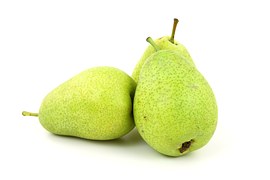- Reduced price



C'est la cannelle dite "de Ceylan" qui est moulue ici en une poudre particulièrement fine.
Elle sera un régal pour parfumer vos tartes aux fruits et vos pâtisseries, vos confitures, compotes, yaourts et tous vos autres desserts.
 Livraison
Livraison
Mondial Relay
 Retours
Retours
Voir conditions
 Paiements
Paiements
100% sécurisés
Livré en sachet refermable
 Cette cannelle au goût suave, doux, sucré, dégageant un parfum délicieux et sa mouture fine comme de la farine la prédisposent tout particulièrement à la confection de desserts!
Cette cannelle au goût suave, doux, sucré, dégageant un parfum délicieux et sa mouture fine comme de la farine la prédisposent tout particulièrement à la confection de desserts!
En cuisine, on associe la cannelle à la pomme, aux abricots et à quasiment tous les fruits, que ce soit dans les compotes, les tartes ou dans les confitures. Elle parfume aussi le chocolat, ainsi que les liqueurs et les alcools (vin chaud, hypocras, punch, rhum arrangé). Elle adoucit le café et se marie délicieusement avec tous les thés.
Pour toutes les préparations à base de liquides (comme les alcools), vous pouvez l'utiliser moulue, mais je lui préfère nettement la cannelle entière, que vous pouvez effriter selon votre envie, mais qui ne laisse aucun dépôt dans les liquides et évite donc d'avoir à les filtrer.
La cannelle participe aussi aux tajines orientales, ainsi qu'à beaucoup de plats indiens.
Enfin, elle est inséparable des mélanges comme le "5 parfums" (cuisine asiatique) et le "4 épices" (pour les farces et les pâtés), ainsi que des mélanges pour le pain d'épices.
Certaines études indiquent que la cannelle aurait aussi de nombreuses vertus médicinales très intéressantes.

Origine: Madagascar
Nom scientifique : Cinnamomum

La cannelle, c'est l'intérieur de l'écorce du cannelier, espèce d'arbre de la famille des Lauracées (tout comme le laurier sauce). L'arbre est cultivé aujourd'hui un peu partout dans les régions chaudes du monde.
Sa saveur est due à l'huile aromatique contenue dans le bois de l'arbre. La partie utilisée correspond à la fine couche intérieure de l'écorce et les opérations de grattages ne peuvent se faire qu'à la main! Pour les bâtons entiers, on roule les écorces les unes sur les autres, puis on les fait sécher. On peut aisément imaginer le travail nécessaire à l'élaboration de chaque tuyau de cannelle...! Pour la cannelle en poudre, on se contente juste de la pulvériser.
°°°
Les Chinois récoltent la cannelle depuis des temps très reculés. Elle est connue depuis l'Antiquité, utilisée par les Egyptiens dans le processus de l'embaumement.
Elle ne serait arrivée en France qu'en 1220. On la retrouve d'ailleurs dans la fameuse boisson médiévale appelée "hypocras".
Allemand : Zimt Anglais : Cinnamon
*****

.jpg)


Data sheet
Reference: 3N7137901
Reference: quatreepices
Reference: EPI230204
Reference: 6N7456401
Reference: 2M6273801
Reference: 10N7738802
Reference: verveine
Reference: 108017302
Reference: badianeM
Reference: ecorcecitronH
Reference: 1N7004306
Reference: 050721
Reference: 7N7525705
Reference: cardamomeverteE
Reference: 26545D
Reference: bergamote
Reference: 3913
Reference: 3N7137901
Reference: 6470

C'est la cannelle dite "de Ceylan" qui est moulue ici en une poudre particulièrement fine.
Elle sera un régal pour parfumer vos tartes aux fruits et vos pâtisseries, vos confitures, compotes, yaourts et tous vos autres desserts.